Attached files
| file | filename |
|---|---|
| EX-99.1 - EX-99.1 - Audentes Therapeutics, Inc. | d710862dex991.htm |
| 8-K - 8-K - Audentes Therapeutics, Inc. | d710862d8k.htm |
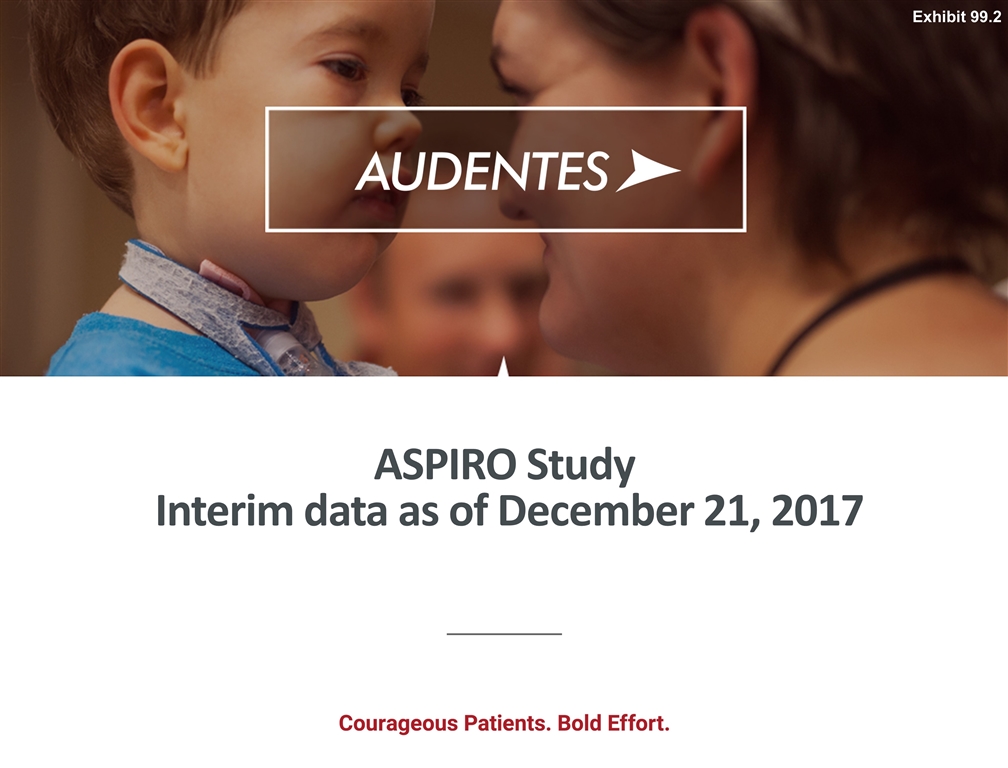
ASPIRO Study Interim data as of December 21, 2017 Exhibit 99.2
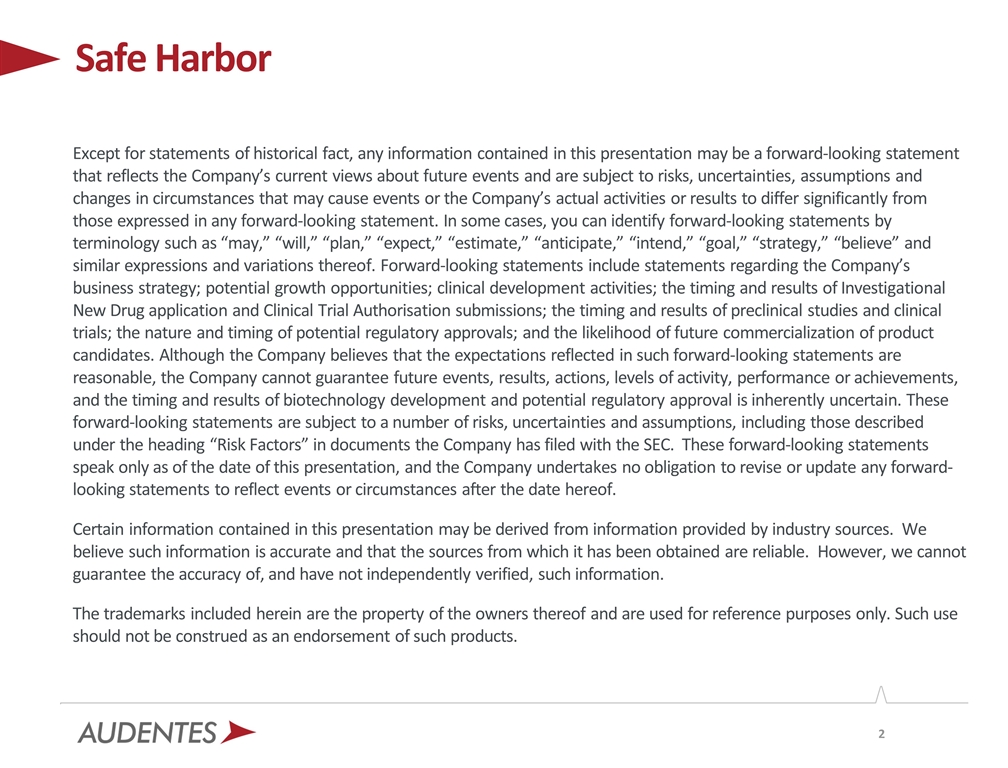
Safe Harbor Except for statements of historical fact, any information contained in this presentation may be a forward-looking statement that reflects the Company’s current views about future events and are subject to risks, uncertainties, assumptions and changes in circumstances that may cause events or the Company’s actual activities or results to differ significantly from those expressed in any forward-looking statement. In some cases, you can identify forward-looking statements by terminology such as “may,” “will,” “plan,” “expect,” “estimate,” “anticipate,” “intend,” “goal,” “strategy,” “believe” and similar expressions and variations thereof. Forward-looking statements include statements regarding the Company’s business strategy; potential growth opportunities; clinical development activities; the timing and results of Investigational New Drug application and Clinical Trial Authorisation submissions; the timing and results of preclinical studies and clinical trials; the nature and timing of potential regulatory approvals; and the likelihood of future commercialization of product candidates. Although the Company believes that the expectations reflected in such forward-looking statements are reasonable, the Company cannot guarantee future events, results, actions, levels of activity, performance or achievements, and the timing and results of biotechnology development and potential regulatory approval is inherently uncertain. These forward-looking statements are subject to a number of risks, uncertainties and assumptions, including those described under the heading “Risk Factors” in documents the Company has filed with the SEC. These forward-looking statements speak only as of the date of this presentation, and the Company undertakes no obligation to revise or update any forward-looking statements to reflect events or circumstances after the date hereof. Certain information contained in this presentation may be derived from information provided by industry sources. We believe such information is accurate and that the sources from which it has been obtained are reliable. However, we cannot guarantee the accuracy of, and have not independently verified, such information. The trademarks included herein are the property of the owners thereof and are used for reference purposes only. Such use should not be construed as an endorsement of such products.
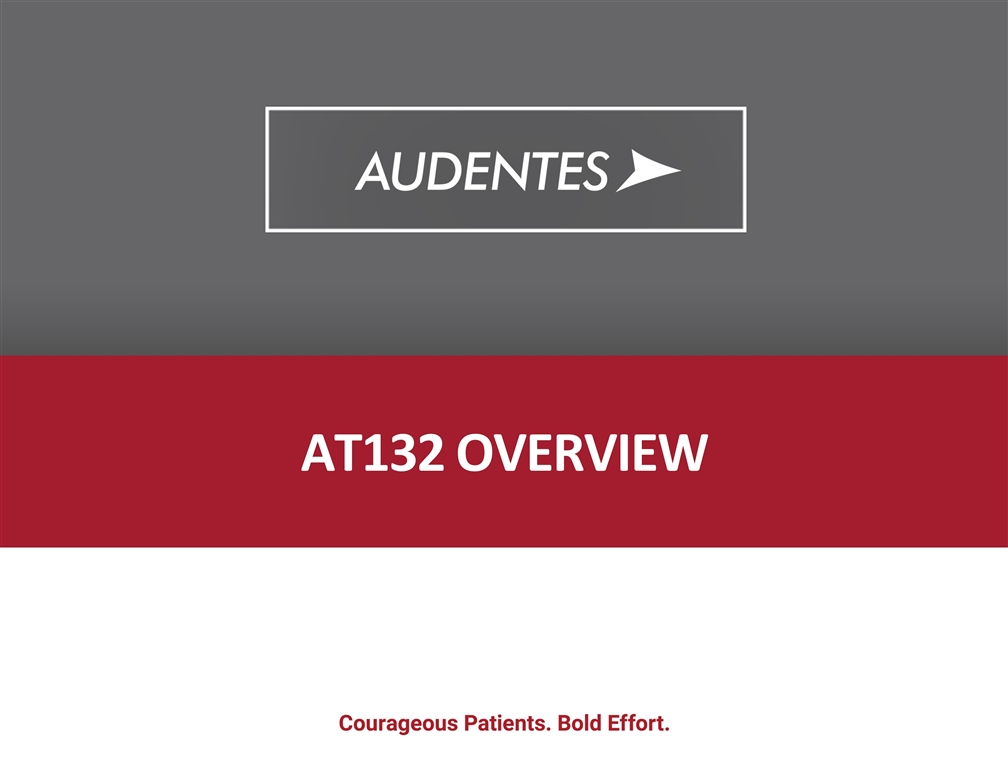
AT132 OveRview
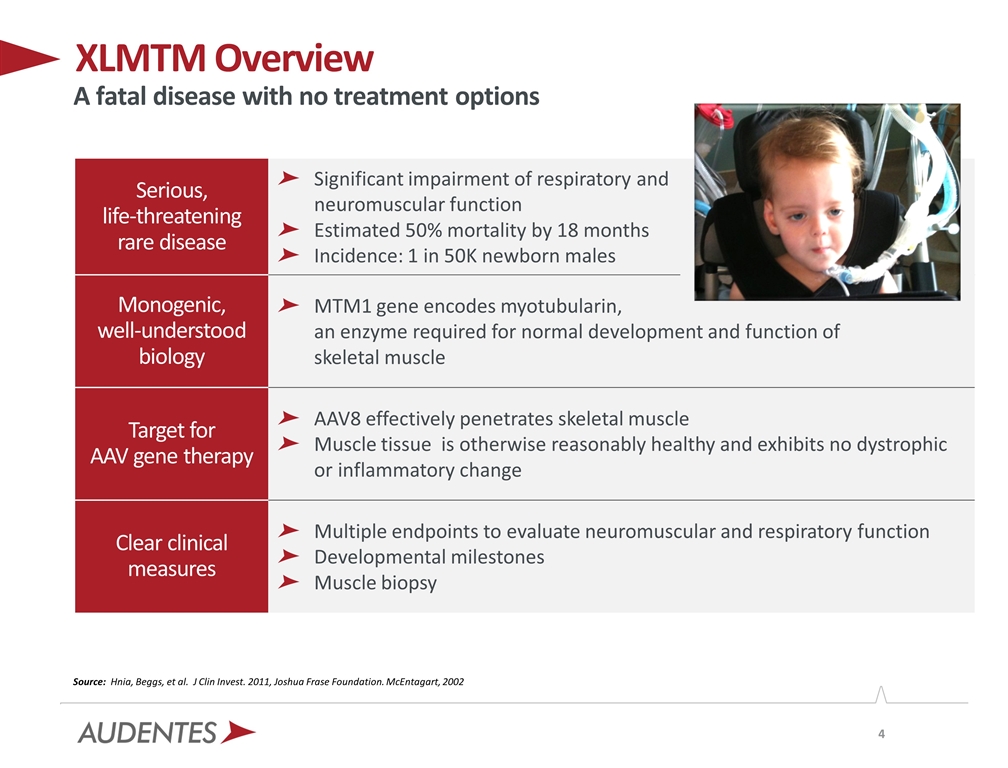
Serious, life-threatening rare disease Significant impairment of respiratory and neuromuscular function Estimated 50% mortality by 18 months Incidence: 1 in 50K newborn males Monogenic, well-understood biology MTM1 gene encodes myotubularin, an enzyme required for normal development and function of skeletal muscle Target for AAV gene therapy AAV8 effectively penetrates skeletal muscle Muscle tissue is otherwise reasonably healthy and exhibits no dystrophic or inflammatory change Clear clinical measures Multiple endpoints to evaluate neuromuscular and respiratory function Developmental milestones Muscle biopsy XLMTM Overview A fatal disease with no treatment options Source: Hnia, Beggs, et al. J Clin Invest. 2011, Joshua Frase Foundation. McEntagart, 2002
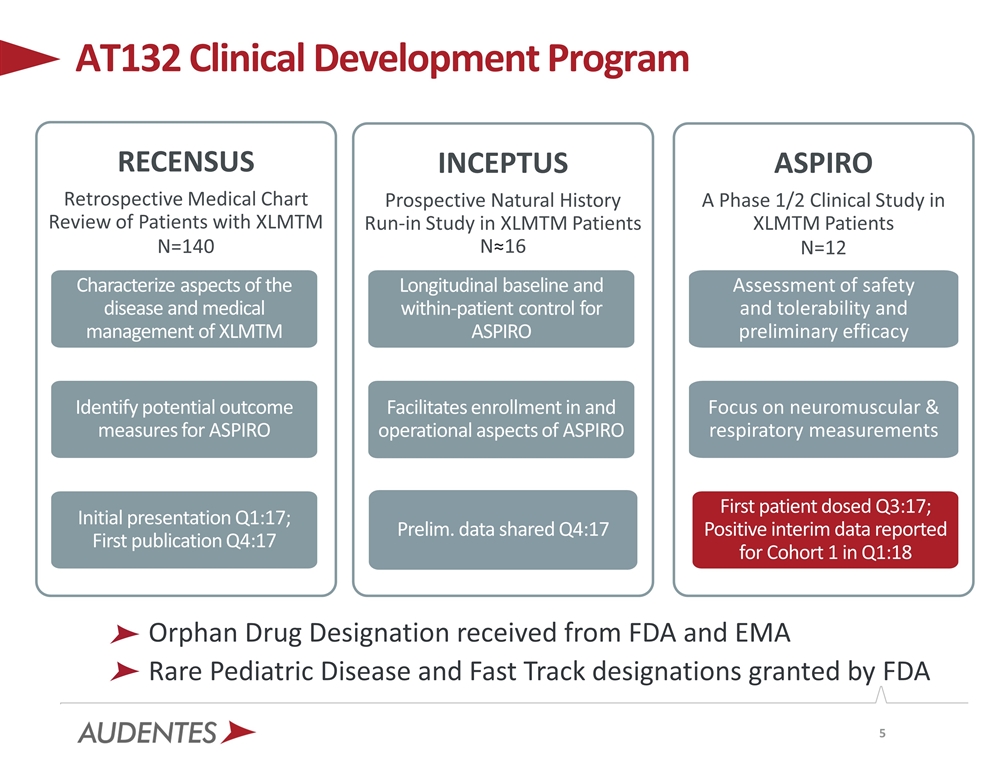
AT132 Clinical Development Program INCEPTUS Prospective Natural History Run-in Study in XLMTM Patients N≈16 Longitudinal baseline and within-patient control for ASPIRO Facilitates enrollment in and operational aspects of ASPIRO ASPIRO A Phase 1/2 Clinical Study in XLMTM Patients N=12 Assessment of safety and tolerability and preliminary efficacy Focus on neuromuscular & respiratory measurements RECENSUS Retrospective Medical Chart Review of Patients with XLMTM N=140 Characterize aspects of the disease and medical management of XLMTM Identify potential outcome measures for ASPIRO Initial presentation Q1:17; First publication Q4:17 Prelim. data shared Q4:17 First patient dosed Q3:17; Positive interim data reported for Cohort 1 in Q1:18 Orphan Drug Designation received from FDA and EMA Rare Pediatric Disease and Fast Track designations granted by FDA
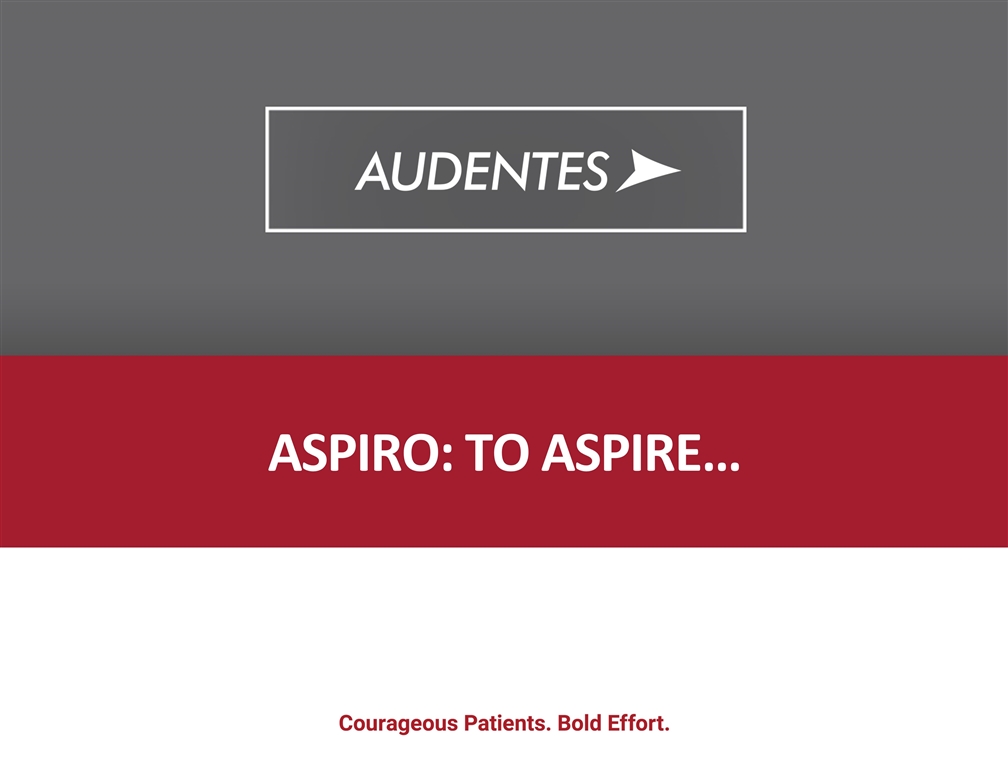
ASPIRO: to aspire…
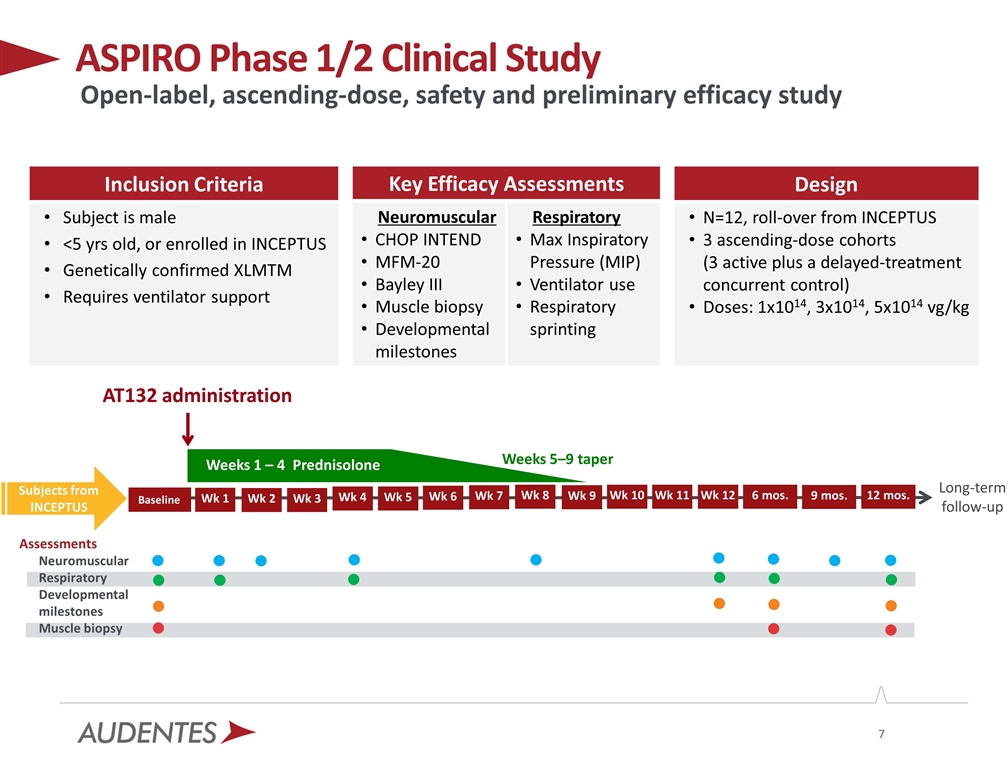
ASPIRO Phase 1/2 Clinical Study Baseline AT132 administration Weeks 5–9 taper Long-term follow-up 6 mos. Inclusion Criteria Subject is male <5 yrs old, or enrolled in INCEPTUS Genetically confirmed XLMTM Requires ventilator support Key Efficacy Assessments Neuromuscular CHOP INTEND MFM-20 Bayley III Muscle biopsy Developmental milestones Respiratory Max Inspiratory Pressure (MIP) Ventilator use Respiratory sprinting Design N=12, roll-over from INCEPTUS 3 ascending-dose cohorts (3 active plus a delayed-treatment concurrent control) Doses: 1x1014, 3x1014, 5x1014 vg/kg Open-label, ascending-dose, safety and preliminary efficacy study Wk 12 Wk 11 Wk 10 Weeks 1 – 4 Prednisolone 9 mos. 12 mos. Baseline Wk 1 Wk 2 Wk 3 Wk 4 Wk 5 Wk 6 Wk 8 Wk 9 Wk 7 Assessments Neuromuscular Respiratory Developmental milestones Muscle biopsy Subjects from INCEPTUS
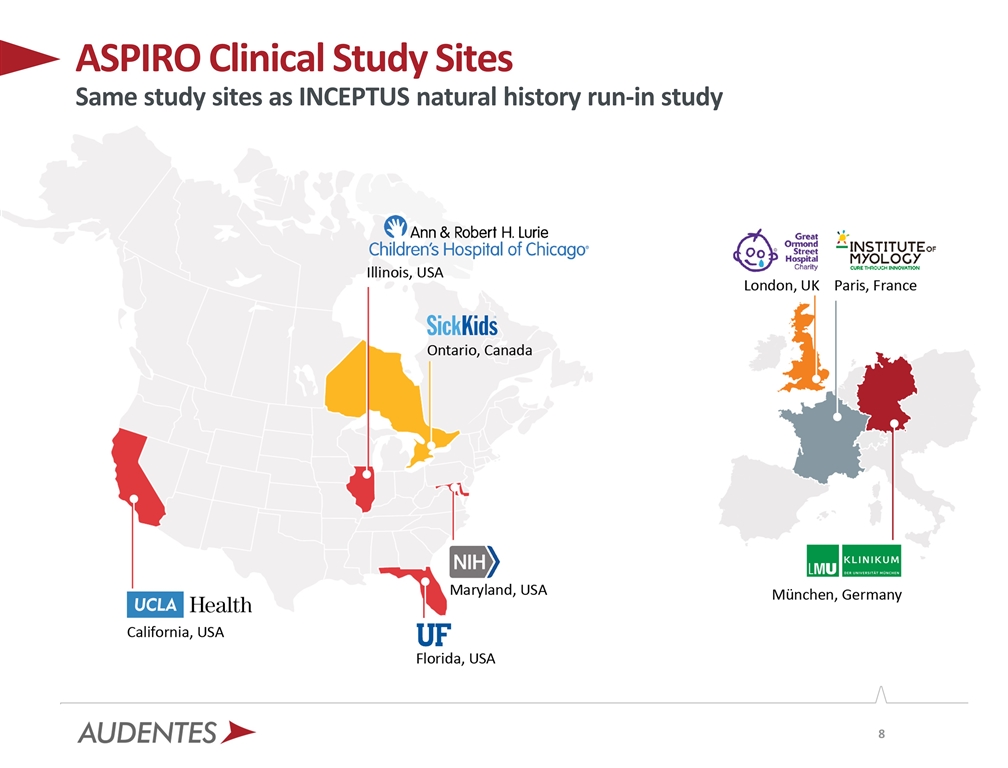
ASPIRO Clinical Study Sites Same study sites as INCEPTUS natural history run-in study
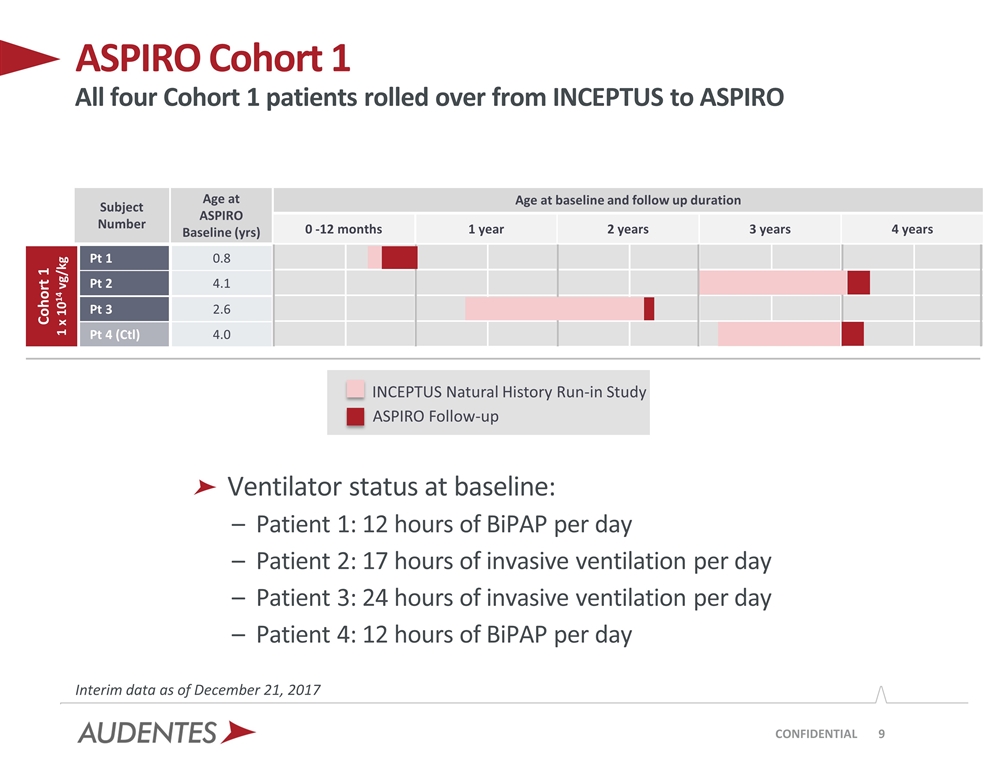
ASPIRO Cohort 1 All four Cohort 1 patients rolled over from INCEPTUS to ASPIRO CONFIDENTIAL ASPIRO Follow-up Interim data as of December 21, 2017 Age at baseline and follow up duration Age at ASPIRO Baseline (yrs) 0.8 2.6 4.1 4.0 Subject Number Pt 1 Pt 3 Pt 2 Pt 4 (Ctl) 0 -12 months 1 year 2 years 4 years 3 years Cohort 1 1 x 1014 vg/kg Ventilator status at baseline: Patient 1: 12 hours of BiPAP per day Patient 2: 17 hours of invasive ventilation per day Patient 3: 24 hours of invasive ventilation per day Patient 4: 12 hours of BiPAP per day INCEPTUS Natural History Run-in Study
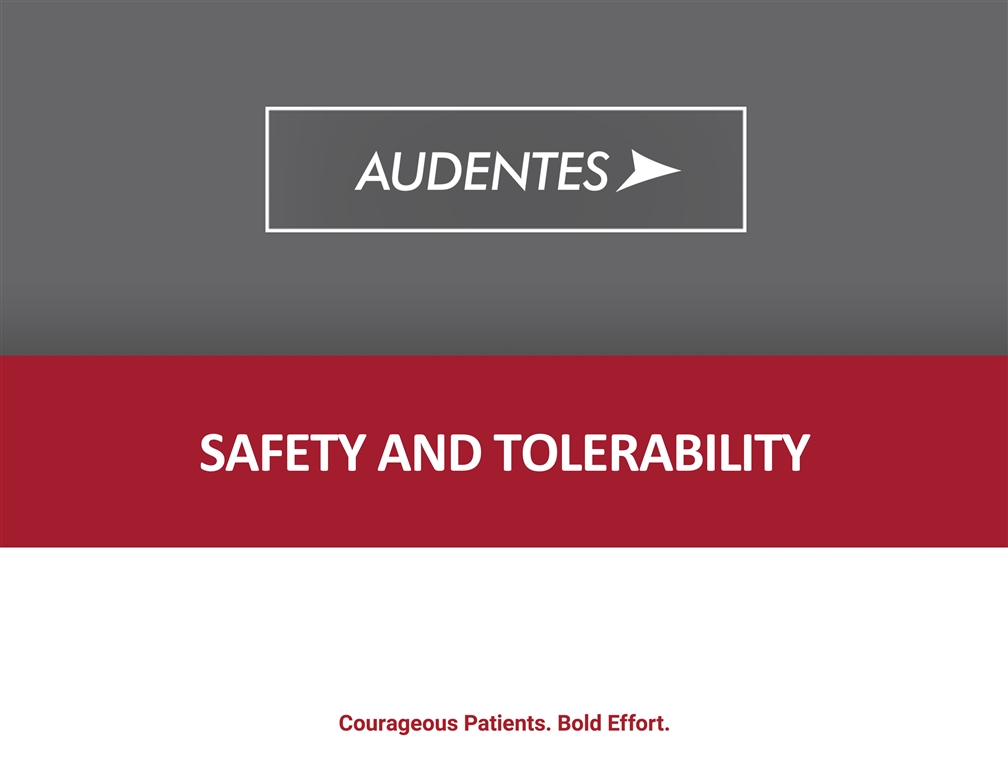
Safety and Tolerability
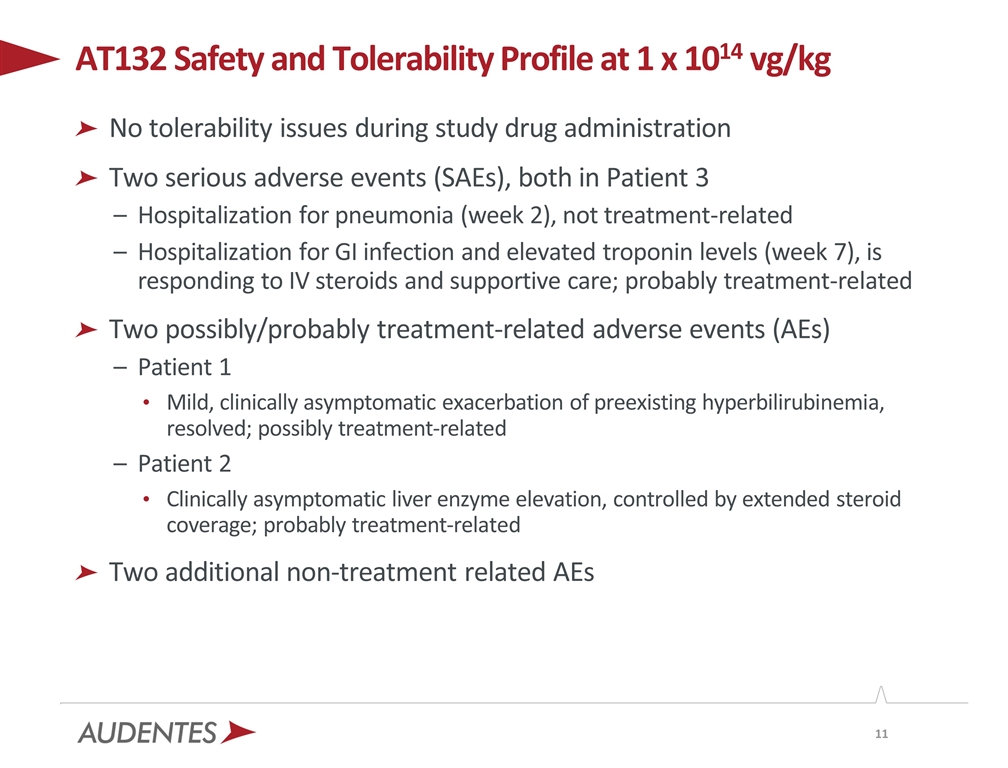
No tolerability issues during study drug administration Two serious adverse events (SAEs), both in Patient 3 Hospitalization for pneumonia (week 2), not treatment-related Hospitalization for GI infection and elevated troponin levels (week 7), is responding to IV steroids and supportive care; probably treatment-related Two possibly/probably treatment-related adverse events (AEs) Patient 1 Mild, clinically asymptomatic exacerbation of preexisting hyperbilirubinemia, resolved; possibly treatment-related Patient 2 Clinically asymptomatic liver enzyme elevation, controlled by extended steroid coverage; probably treatment-related Two additional non-treatment related AEs AT132 Safety and Tolerability Profile at 1 x 1014 vg/kg
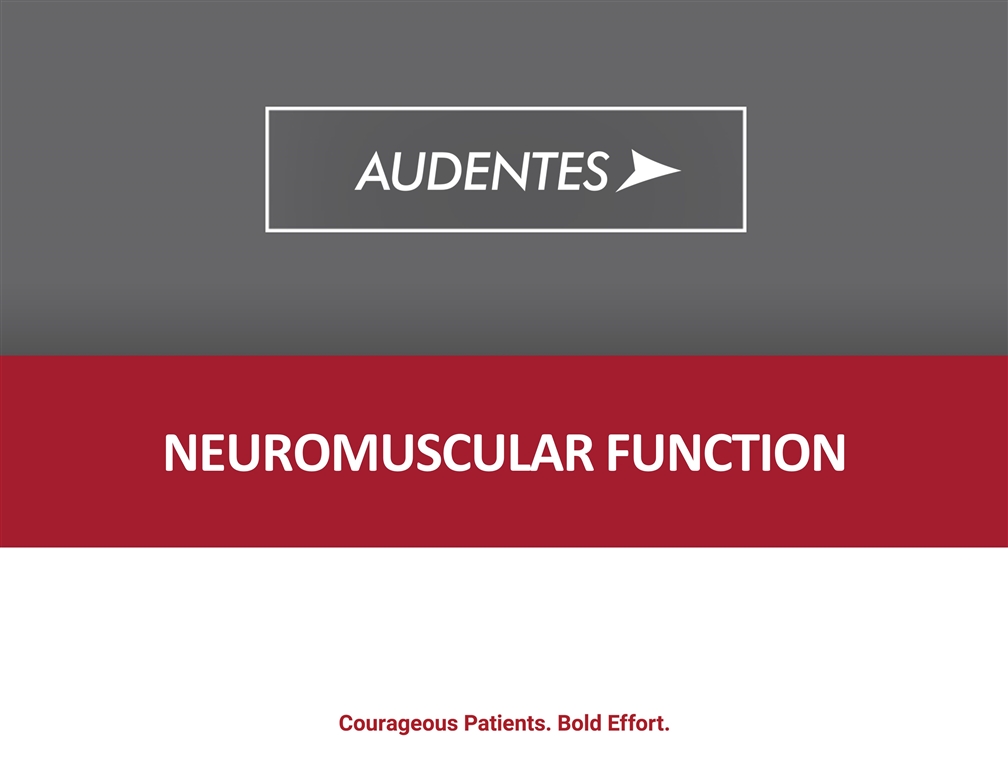
Neuromuscular function
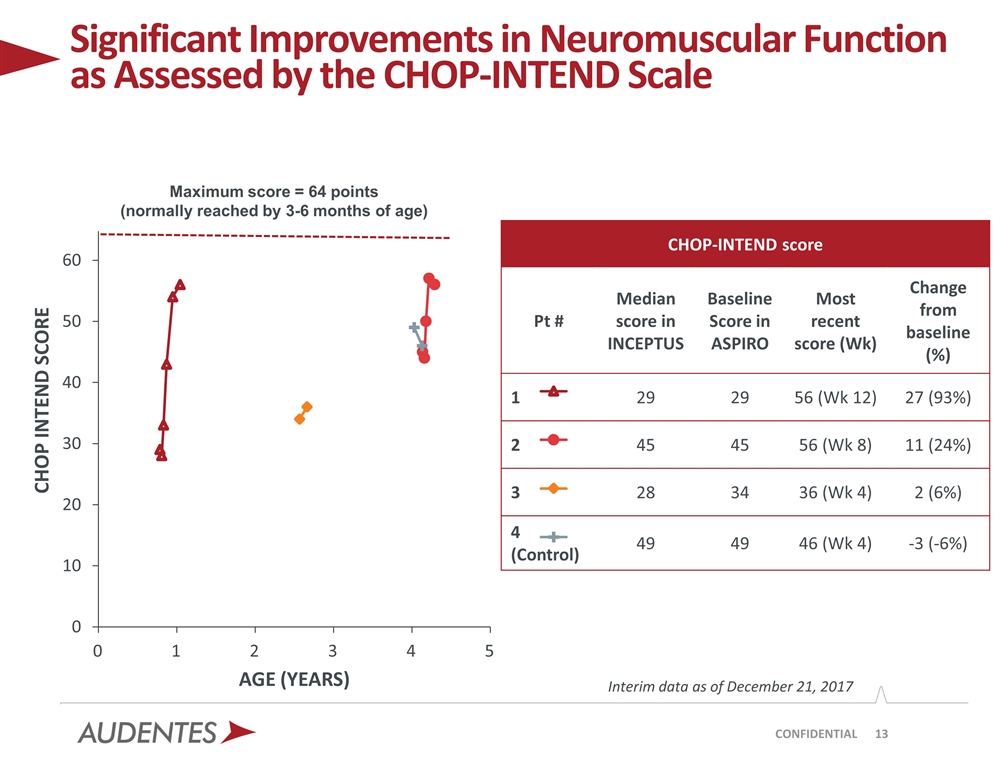
Significant Improvements in Neuromuscular Function as Assessed by the CHOP-INTEND Scale CONFIDENTIAL Maximum score = 64 points (normally reached by 3-6 months of age) Interim data as of December 21, 2017 CHOP-INTEND score Pt # Median score in INCEPTUS Baseline Score in ASPIRO Most recent score (Wk) Change from baseline (%) 1 29 29 56 (Wk 12) 27 (93%) 2 45 45 56 (Wk 8) 11 (24%) 3 28 34 36 (Wk 4) 2 (6%) 4 (Control) 49 49 46 (Wk 4) -3 (-6%)
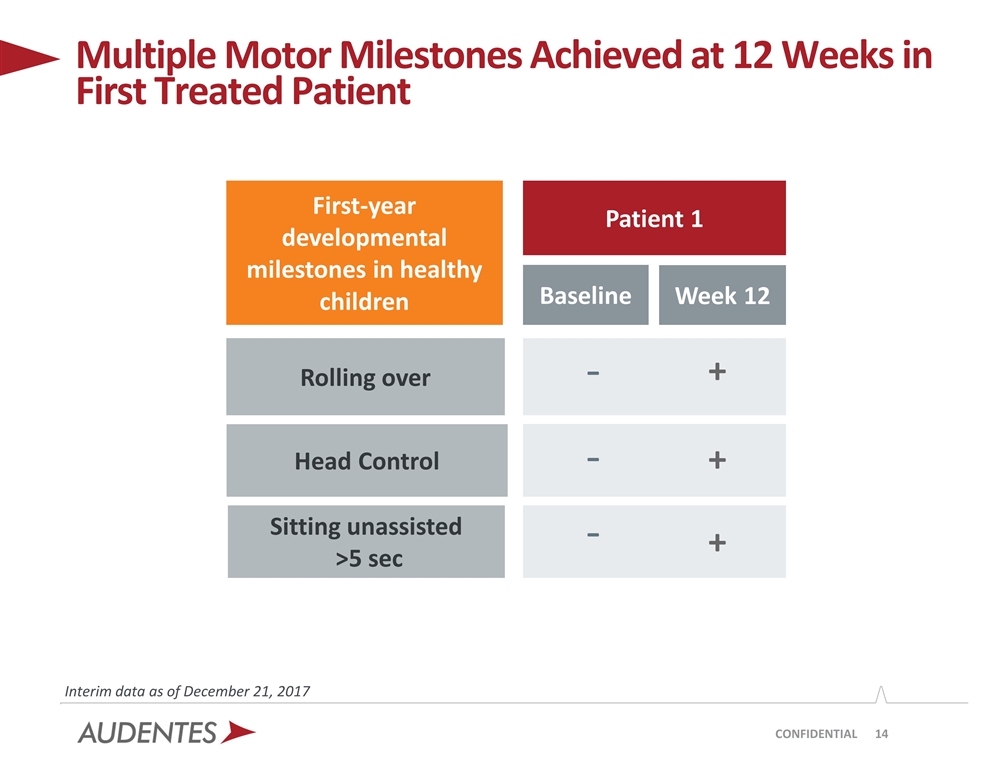
CONFIDENTIAL Multiple Motor Milestones Achieved at 12 Weeks in First Treated Patient Interim data as of December 21, 2017 First-year developmental milestones in healthy children Patient 1 Baseline Week 12 Rolling over Head Control Sitting unassisted >5 sec - - - + + +
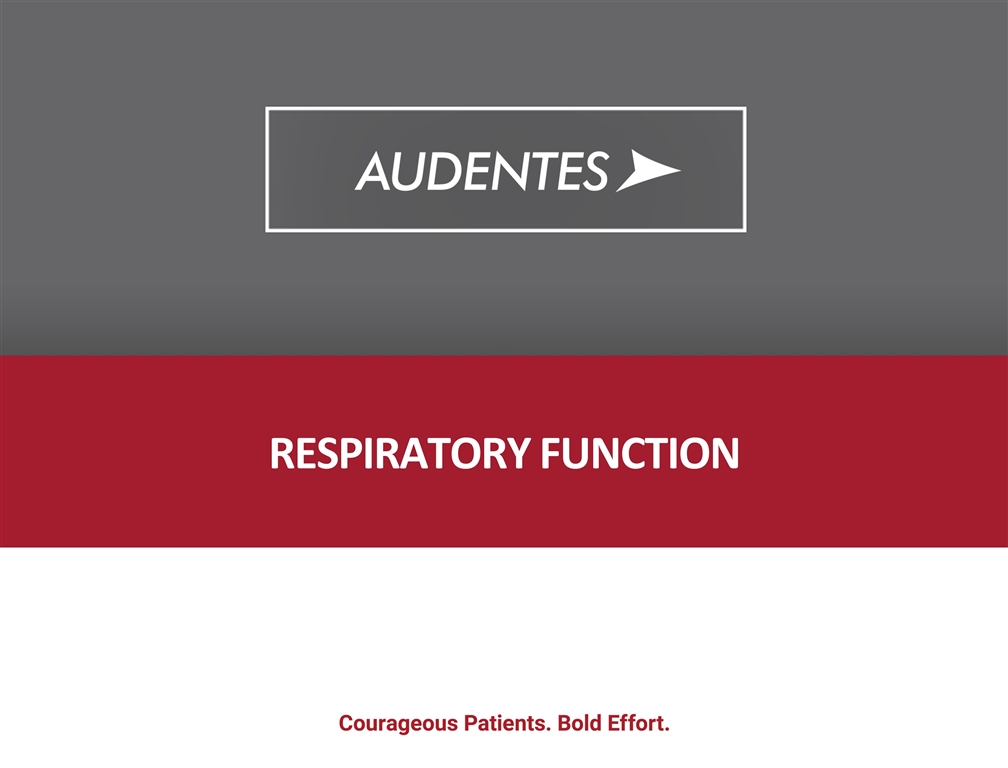
Respiratory function
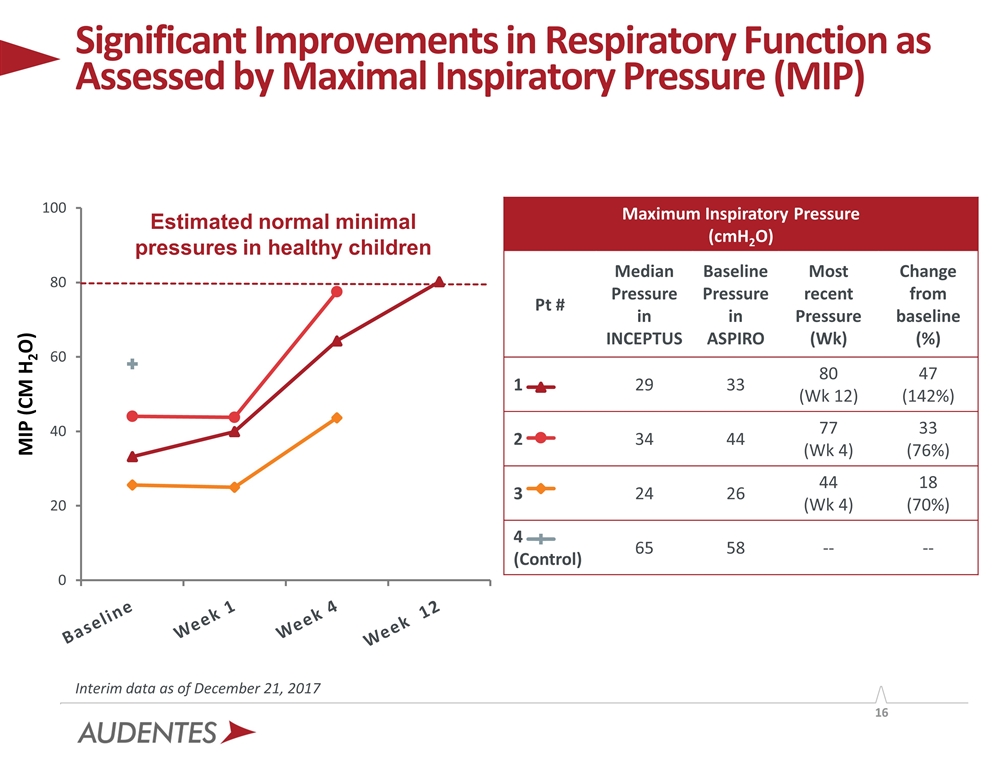
Significant Improvements in Respiratory Function as Assessed by Maximal Inspiratory Pressure (MIP) Estimated normal minimal pressures in healthy children Interim data as of December 21, 2017 Maximum Inspiratory Pressure (cmH2O) Pt # Median Pressure in INCEPTUS Baseline Pressure in ASPIRO Most recent Pressure (Wk) Change from baseline (%) 1 29 33 80 (Wk 12) 47 (142%) 2 34 44 77 (Wk 4) 33 (76%) 3 24 26 44 (Wk 4) 18 (70%) 4 (Control) 65 58 -- --
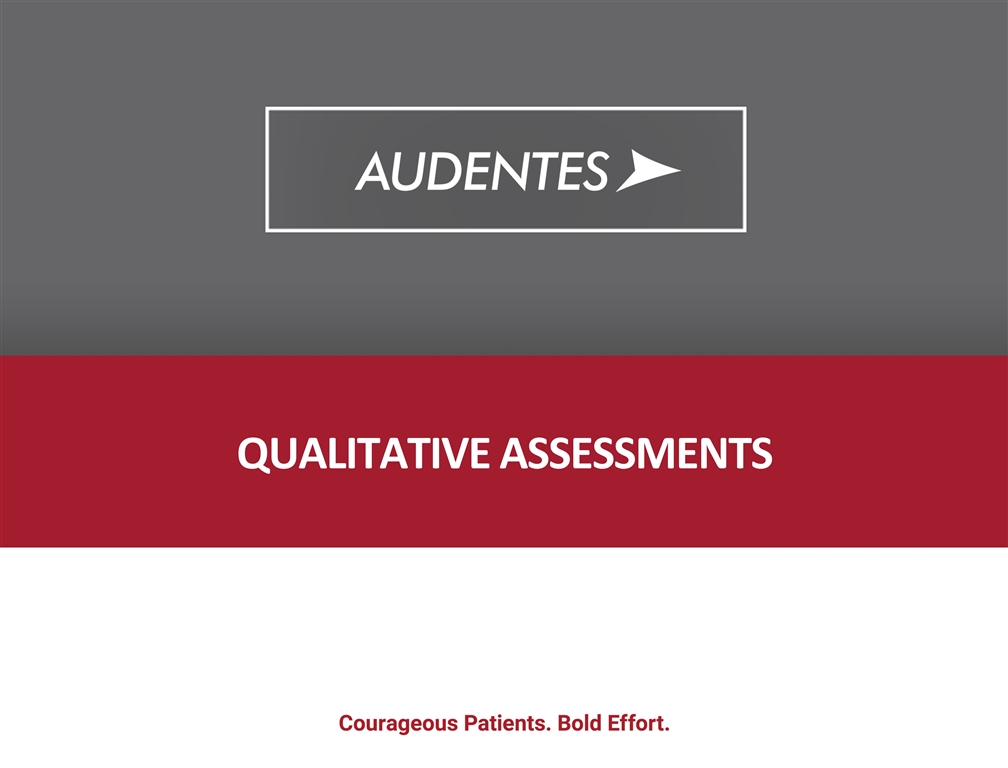
Qualitative ASSESSMENTS
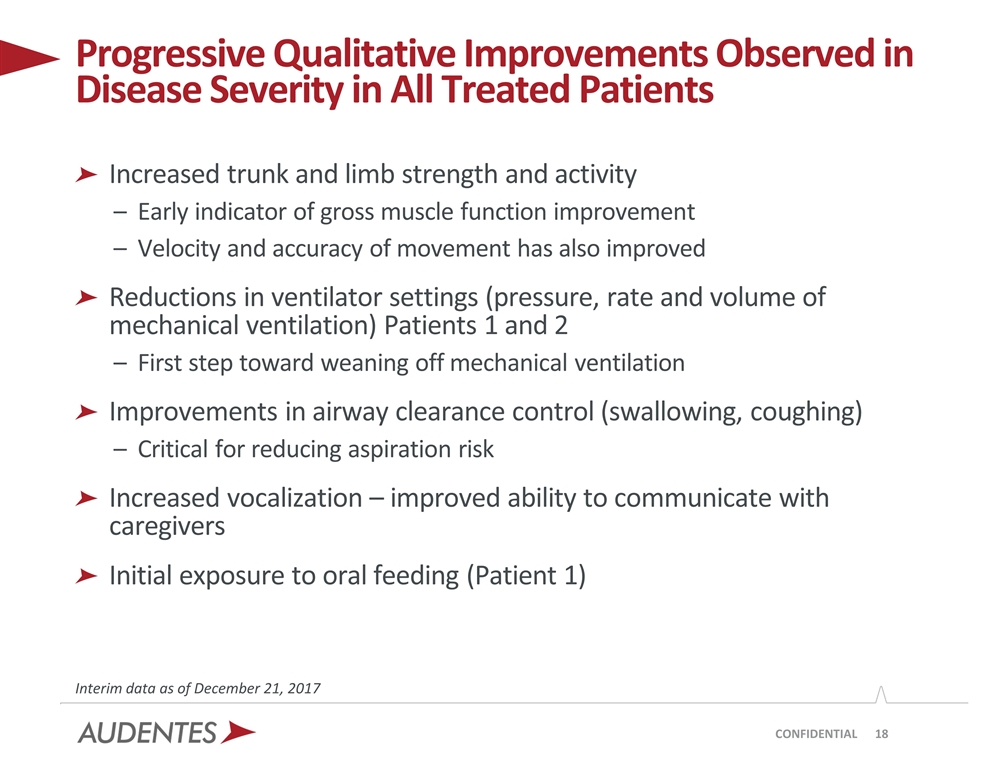
CONFIDENTIAL Increased trunk and limb strength and activity Early indicator of gross muscle function improvement Velocity and accuracy of movement has also improved Reductions in ventilator settings (pressure, rate and volume of mechanical ventilation) Patients 1 and 2 First step toward weaning off mechanical ventilation Improvements in airway clearance control (swallowing, coughing) Critical for reducing aspiration risk Increased vocalization – improved ability to communicate with caregivers Initial exposure to oral feeding (Patient 1) Progressive Qualitative Improvements Observed in Disease Severity in All Treated Patients Interim data as of December 21, 2017
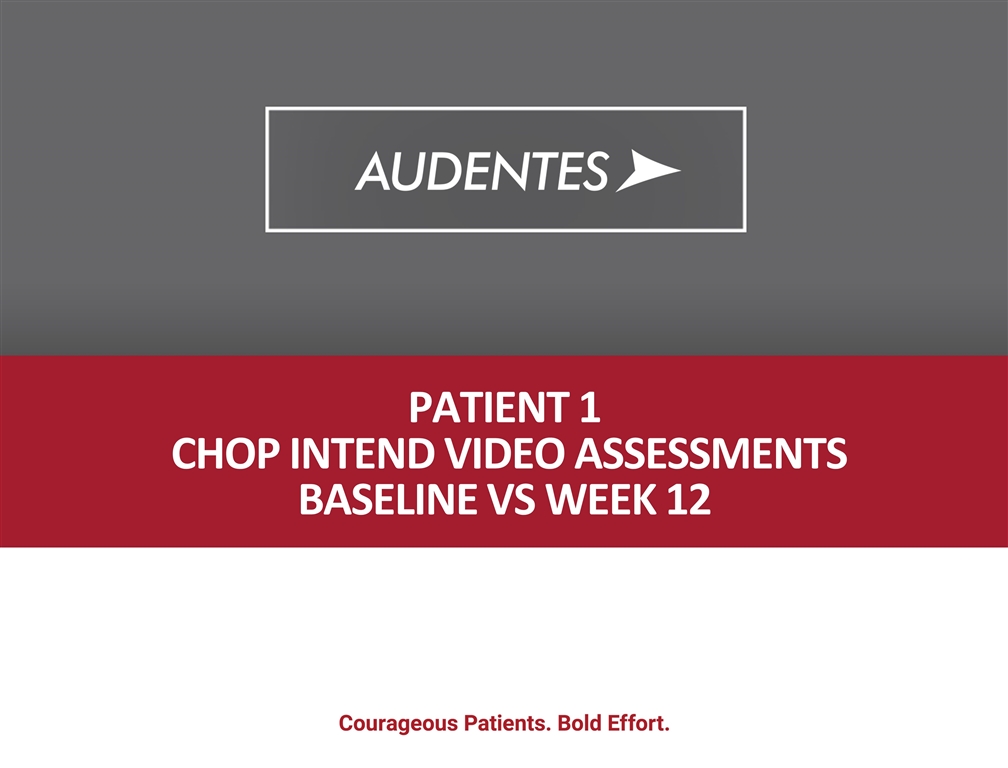
Patient 1 chop intend video assessments baseline vs Week 12
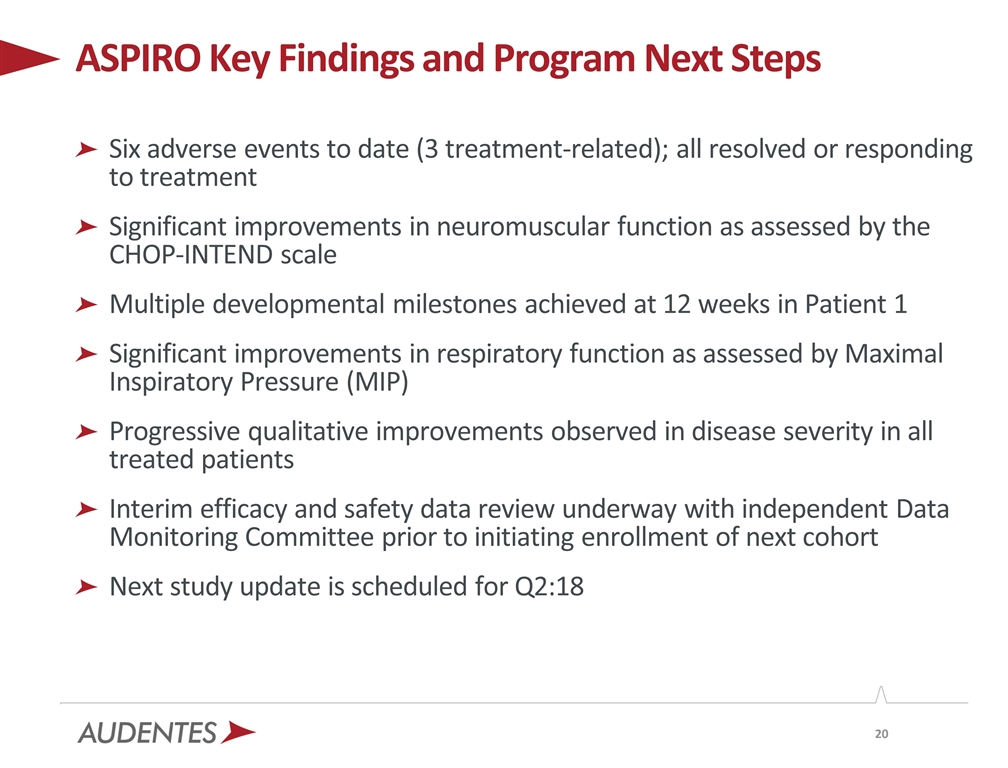
Six adverse events to date (3 treatment-related); all resolved or responding to treatment Significant improvements in neuromuscular function as assessed by the CHOP-INTEND scale Multiple developmental milestones achieved at 12 weeks in Patient 1 Significant improvements in respiratory function as assessed by Maximal Inspiratory Pressure (MIP) Progressive qualitative improvements observed in disease severity in all treated patients Interim efficacy and safety data review underway with independent Data Monitoring Committee prior to initiating enrollment of next cohort Next study update is scheduled for Q2:18 ASPIRO Key Findings and Program Next Steps
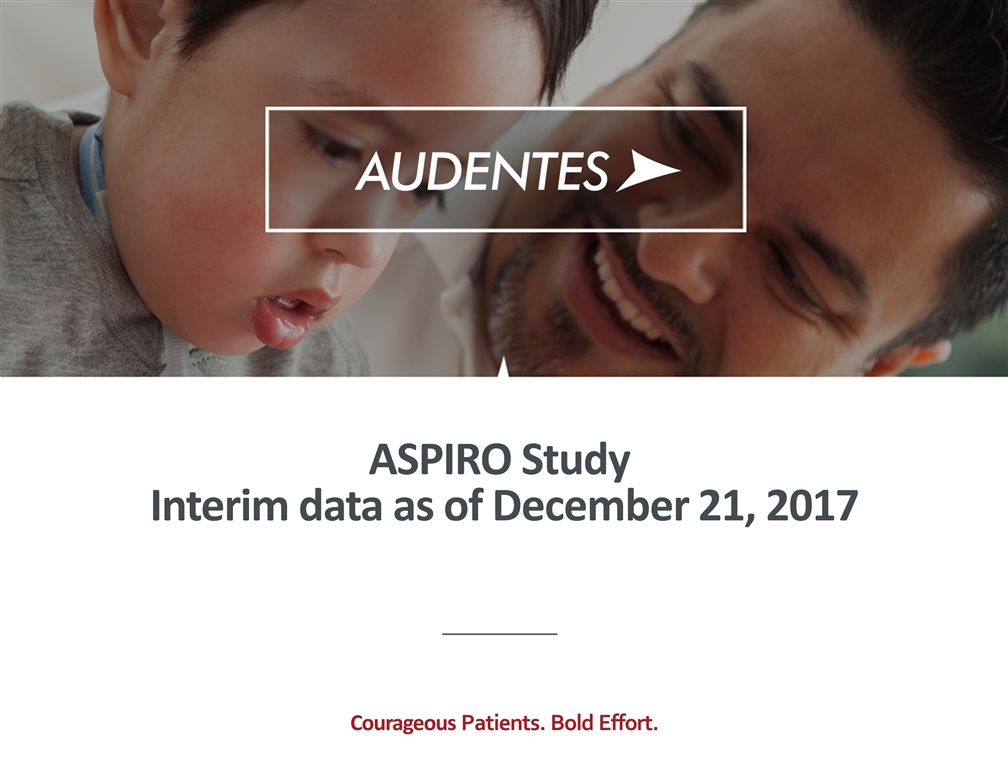
ASPIRO Study Interim data as of December 21, 2017
